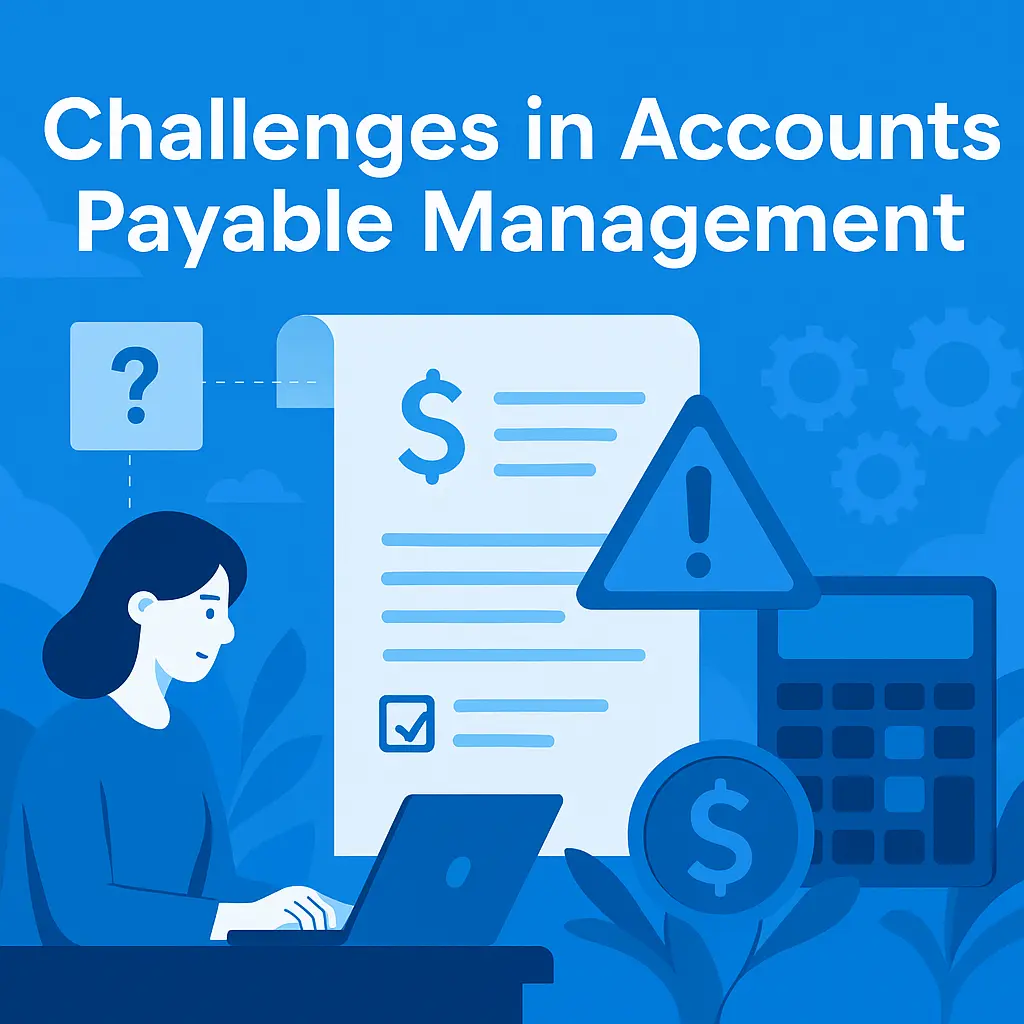While accounts payable (AP) is a critical function for maintaining cash flow and supplier trust, it is also prone to many challenges that can disrupt operations and increase costs. From processing errors to compliance gaps, managing AP effectively requires careful planning and continuous improvement. In this article, we’ll look at the most common challenges businesses face with AP and how to address them proactively.
Why AP Challenges Matter
Inefficient AP processes can lead to:
- late payment penalties
- supplier disputes
- fraud risk
- poor cash flow predictability
Identifying these challenges early allows you to build a more resilient, compliant, and efficient finance operation.
Key Challenges in Accounts Payable
1
Invoice Processing Delays
Manual data entry, missing information, and slow approvals often delay invoice processing, leading to missed discounts and supplier dissatisfaction. automate approvals, and identify fraudulent invoices.
2
Paper-Based Processes
Physical invoices and paper documentation slow down workflows, increase errors, and make remote work harder.
3
Data Entry Errors
Manual input leaves room for mistakes, resulting in duplicate payments, inaccurate records, or compliance risks.
4
Lack of Process Visibility
Without real-time tracking, it’s difficult to know where invoices stand, slowing down decision-making and increasing frustration.
5
Complex Approval Hierarchies
Too many approval layers or unclear authority limits cause bottlenecks and delayed payments.
6
Dispute Resolution
Resolving invoice discrepancies can be time-consuming and lead to strained supplier relationships if not managed effectively. help finance teams make smarter decisions.
7
Inconsistent Payment Terms
Different terms across vendors create confusion, complicate cash flow planning, and increase errors. transactions.
8
Supplier Management Complexity
Managing records, communications, and compliance for a large vendor base can overwhelm smaller AP teams.
9
Manual Reconciliation
Matching invoices, statements, and payments manually is tedious, slow, and error-prone.
10
Fraud and Cybersecurity Risks
Phishing attacks, fake invoices, and other fraud tactics are growing threats to AP teams, requiring robust controls and vigilance.
11
Compliance Challenges
Navigating tax regulations, accounting standards, and audit trails can be challenging, especially for businesses operating in multiple countries.
12
Late Payments and Penalties
Invoice backlogs or process errors can cause missed deadlines, harming supplier trust and triggering financial penalties.
13
Lack of System Integration
When AP tools don’t talk to procurement, ERP, or banking systems, duplicate data entry and errors become common.
14
Data Security and Privacy
Handling sensitive financial data requires strong cybersecurity and role-based access controls to prevent leaks or unauthorized use.
15
Manual Reporting
Compiling AP metrics and reports manually takes time and often results in outdated or inaccurate insights.
How to Overcome These Challenges
- Adopt automation tools for data capture and approvals
- Move to electronic invoicing to eliminate paper
- Build clear approval workflows
- Integrate AP with ERP systems for seamless data flow
- Maintain clean, updated vendor master data
- Train staff on fraud awareness and compliance protocols
- Schedule regular audits and process reviews
These steps will strengthen your AP function and help you avoid costly mistakes.
Conclusion
Accounts payable challenges are common — but they are not insurmountable. With the right processes, technology, and partners, you can transform AP into a strategic advantage that supports your business growth.



